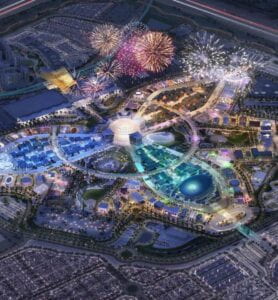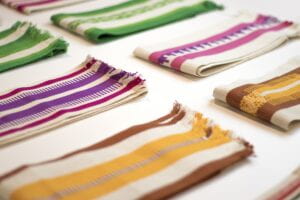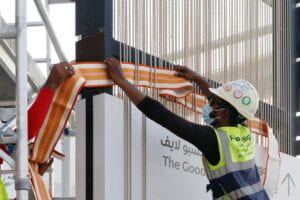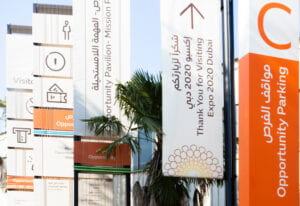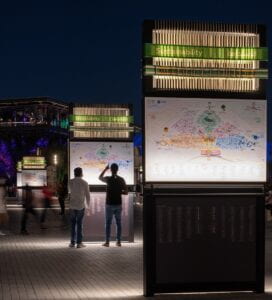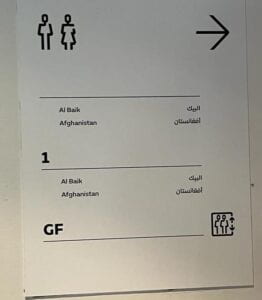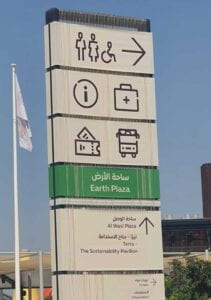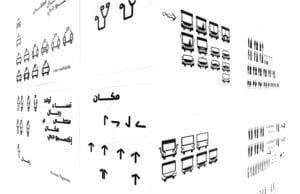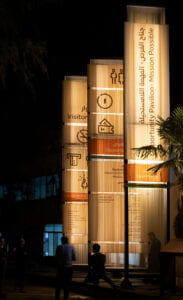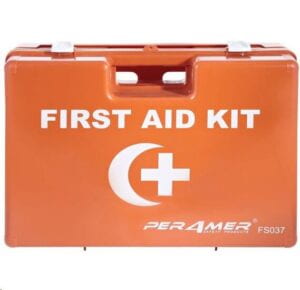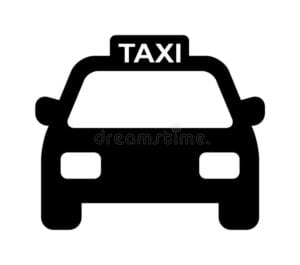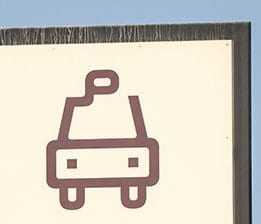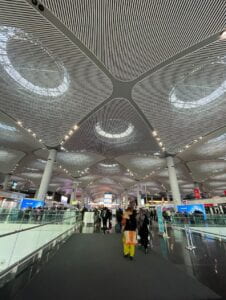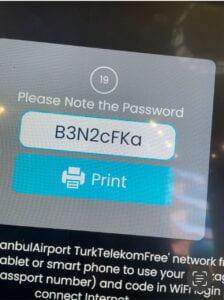As I write my final blog post for the semester, it is hard to believe that we are coming to the end of the fourteen weeks of Wayfinding. At this realization, I am met with a range of emotions: sadness, excitement, gratefulness, and motivation, to list a few. But, I suppose the notion of wayfinding does not end as these fourteen weeks do. Wayfinding is everywhere; from along the Highline to on the busy city roads to inside metro stations and shopping malls, to even digital means. This class helped me recognize the weight wayfinding design carries. In addition to the ever-presence of wayfinding, there are some takeaways from this class that I will take with me beyond this classroom. I want to share my most important one: what I learned from my peers.
Before I begin enumerating some snippets of what my peers have taught me, I want to give a little tribute to Professor Goffredo. From the very first virtual class, Professor Goffredo has been imparting little words of wisdom here and there. ‘Life Lessons with Professor Goffredo,” if you will. Yes, I have coined the term now. Anyway, one of the first “Life Lessons” Professor Goffredo gave to the class is one that has stuck with me. He said something along the lines of that people, in general, invest so much money, so much time, and so many resources into trying to bring together a diverse group of people; diverse in terms of financial background, race, ethnicity, religion, gender, political beliefs, etc. All we have to do is go to the D2 dining hall. Our wayfinding class has proven to be an obvious example of this.
It was from Ishmal that I realized the importance of universality in pictogram design. She highlighted to there is a balance needed between consistency for clarity and brand identity in terms of pictograms through her analysis of the unique set of pictograms designed for Expo 2020 Dubai. Perhaps pictograms are not the place for companies to be reinventing the wheel as they can leave users even more confused. On a side note, she also taught me how getting on the wrong bus in Florence can push you to discover a whole new part of the city – and put you even further away from your intended destination.
It was from Jennifer that I truly comprehended the notion of affordance and nudges in wayfinding design. Through sharing her experience at Umm Al Emarat Park, she highlighted the discrepancy between what the design of the environment allows the user to do and what the user is actually permitted to do (in this case, according to the security guard). But if I am able to stand on the slabs of concrete on the water, they probably want me to, right? Jennifer also did an in-depth analysis of Olympic pictograms. This blog post of hers was super useful for me to generate ideas for my own impossible pictogram – so thank you, Jennifer!
It was from Laura and her experience navigating through the Istanbul Airport during a layover that brought valuable insight into the necessary features of airport wayfinding systems. Big, clear, and visible signage systems, useful and conventional pictograms, an intuitive layout, and accessible pathways are all important components of such a system. Especially with so many people traveling in and out of this airport from all around the world, it is important that the airport functions seamlessly to avoid frustrating, and costly, complications.
It was from Yeji that I was compelled to make more of a conscious effort to be more attentive to my surroundings, and from a multi-faceted perspective. In terms of design, this finding has helped me make sure I keep the user experience in mind – in whatever form that may be. For instance, designing for accessibility, intuitiveness, comfort, ease, etc. Moreover, this attentiveness has also prompted me to take a step back more often to pause and just be more attentive to the world around me. Just as she did with her amazing drawings!
It was through Hasin that I learned the power of tactile brainstorming. Perhaps this is another one of Professor Goffredo’s life lessons. Hasin covered entire whiteboards with sketches, drawings, and brainstorms of ideas for his impossible pictogram. When I felt stuck and felt like I had run out of ideas, I went to him for help and the advice he gave me was to keep sketching…in a tactile form (on paper, the whiteboard, etc). It was eye-opening to observe the process of how an idea can evolve and develop as you continue to draw it and work with it in different ways.
It was through Zunair that I was able to broaden my definition of wayfinding to include online wayfinding as well as broaden my definition of online wayfinding itself. I was under the impression that online wayfinding entailed applications such as Google Maps or Waze. After reading Zunair’s blog, however, I realized that navigating through all kinds of applications and websites are also forms of digital wayfinding. This is especially important with the rapid development and growth of technology, even more so in a pandemic/post-pandemic society.
It was through Ulan that I have become less naive to the effect that advertisements have on me. I know to be wary of tactics employed heavily by the advertisement industry such as the attractiveness bias or the familiarity which help in persuading consumers to purchase the product/service being advertised. It is quite scary to know that through these methods, industries as such have the power to shape societal norms and behaviors and subtly mold the mindsets of consumers.
It was through Abdulrahman that I was able to ask for help more comfortably. Abdulrahman and I sat next to each other throughout the semester. Thus, he was naturally the first person I would turn to ask for feedback on an idea, to ask for help in navigating software like Photoshop or Illustrator, to test out my ‘Cheat Sheet,’ etc. I will admit that all this required me to change my mindset and push myself outside my comfort zone. I had to realize and internalize the notion that asking for help is not a sign of weakness or incompetence, but a request for more information and knowledge.
And that is just the tip of the iceberg. I can not list every single thing I have learned from each of my peers, but I hope this provided a little insight. I have learned so much from those around me and have grown tremendously because of it. My knowledge of wayfinding design has grown, my ability to effectively communicate visually and verbally has expanded, and my capacity to ask questions and for help has developed by many, many folds. All in all, I have been prompted to reflect on my time at NYUAD thus far and grown to appreciate the interactions I have had with the diverse student body to a whole new level. The fact that such diversity is so readily available to us is incredible and this class has allowed me to be grateful for the space I hold here – and what I can do with it.
